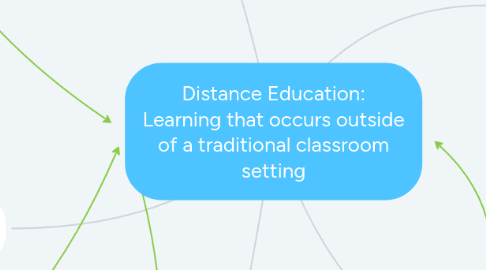
1. Multiple accrediting bodies exist in the US
1.1. Institutional Accrediting Body
1.1.1. Focus lies in the institution itself
1.2. Professional/Specialized Accrediting Body
1.2.1. Example: Commission on Collegiate Nursing Education (CCNE)
1.2.1.1. Value-Based Initiatives
1.2.1.1.1. Trust
1.2.1.1.2. Continuous Quality Improvement
1.2.1.1.3. Inclusivity
1.2.1.1.4. Review and Oversight by Peers
1.2.1.1.5. Integrity
1.2.1.1.6. Innovation
1.2.1.1.7. Self-assessment
1.2.1.1.8. Lifelong Learning
1.2.1.1.9. Accountability
1.2.1.1.10. Cost-effectiveness and cost-accountability
1.2.1.1.11. Graduates are professional effective and socially responsible
1.2.1.1.12. Autonomy and Procedural Fairness
1.2.1.2. Includes accreditation of distance programs
1.3. Example: National League for Nursing Commission for Nursing Education Accreditation (NLN CNEA)
1.3.1. Core Values
1.3.1.1. Diversity
1.3.1.2. Caring
1.3.1.3. Integrity
1.3.1.4. Excellence
1.3.2. Accreditation standards are applied to all types of nursing programs including distance education programs
2. Accreditation
2.1. Applies to all institution programs, including online learning programs
2.2. Voluntary self-regulation
2.2.1. Process
2.2.1.1. Assessment of institution's ability to and effectiveness in meeting it's mission statement
2.2.1.2. Assessment of compliance with accreditation requirements set forth by the desired accrediting body
2.2.1.3. Assessment of efforts in quality improvement of programs, curriculum, and institutional services
2.2.2. Product
2.2.2.1. Outcome of accreditation process
2.2.2.2. Statement of the institution's ability to meet the requirements of the accrediting body.
3. Higher Education Opportunity Act
3.1. Independent Evaluation
3.1.1. Holds agreement with National Research Council of the National Academy of Sciences; comparatively evaluates distance based learning programs versus campus based learning programs
4. Online Education
4.1. Requires basic knowledge of computers/computer skills
4.1.1. Email use including use of attached files
4.1.2. Basic internet use
4.1.3. Word processing, (possibly) PowerPoint
4.1.4. Creation and storage of files in an orderly fashion on a computer
4.1.5. Downloading/uploading files
4.2. Planning for instruction is similar to that of face-to-face learning
5. Staff/Instructors and Students not always present in the same place at the same time
5.1. Correspondance Course
5.1.1. Course materials are sent to student
5.1.2. Materials are completed and sent back to institution for grading
5.1.3. Not Internet-based
5.2. Web-Facilitated Course
5.2.1. Face-to-face course with a small amount of online content
5.3. Blended Course
5.3.1. Learning occurs both in a classroom and online
5.4. Online Course
5.4.1. Small scale course
5.4.2. MOOC (Massive Online Open Course)
5.4.2.1. Generally does not provide useable credit
5.4.2.2. Large number of students
5.4.2.3. Student typically does not need to be registered at the institution providing the education
